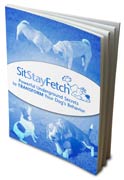Loose leash walking is one of the most challenging behaviors to teach. In this article, I shared with few of my favorite techniques on leash walking which I personally use.
If you follow these techniques, you will not make any complaints that your is pulling their walks. You will enjoy walk with your dog and you will not require any prong collars or other devices that supposedly stop pulling.
5 tips for leash walking for dog owners
Tip#1 Choosing the Right Approach for the Age of Your Dog
Puppies (0-6 mos.) With puppies, I've found the best method is to have a few steps of highly reinforced loose leash and attention followed by a lot of playing/sniffing/exploring.
Adolescence (6 mos. - 3 years) If you have an adolescent dog, you must have a place where they can exercise themselves. Expecting an adolescent dog to pay attention and walk nicely before he has had a chance to work off some of his energy is setting you both up for failure.
Adult dog (3+ years) This is when you can take long walks and reasonably expect your dog to walk quietly -- this is, if you have built a reinforcement history. On and off is still a nice concept, and adults still have exercise needs and still need to get the work out.
Tip #2: Never try to walk a dog that has been cooped up all day.
If your dog has been lying around waiting for you, let him burn off some of his energy before you take him for a walk. Throw a ball, play tug-o-war, or do something to calm him down before the walk.
Tip #3: Use a gentle leader.
One of the best collars on the market is the gentle leader head collar. It works by controlling your dog's head. When you control the head you can control the body, much the same as a horse bridle is used. They really are great collars.
Tip #4: Teach him where you want him to be.
Your dog does not know that he is supposed to be walking on your side. Spend some time using a lure. Put a little piece of food in your left hand and hold it close to your dog's nose. Have him follow the lure; reward him every five or six feet. As he gets better, go for longer and longer periods.
Tip #5: Don't let your dog's opposition reflex kick in.
When you apply pressure, your dog will resist with counter-pressure. If you pull back on the leash, he will resist and pull harder...opposition reflex.The secret to leash walking is always keeping the leash loose. Don't allow the leash to become tight. So, next time your dog starts to pull on his leash, shut up and walk away!
Recommended Resource: Sit Stay Fetch Dog Training Guide by Daniel. Read sitstayfetch review based on my personal experience. Worldwide thousands people used the dog behavior training tips of sit stay fetch successfully.
Click the image below to download sitstayfetch
Further Reading On Leash Training:
1. http://www.amazingdogtrainingman.com/
2. http://www.clickersolutions.com/articles


No comments:
Post a Comment